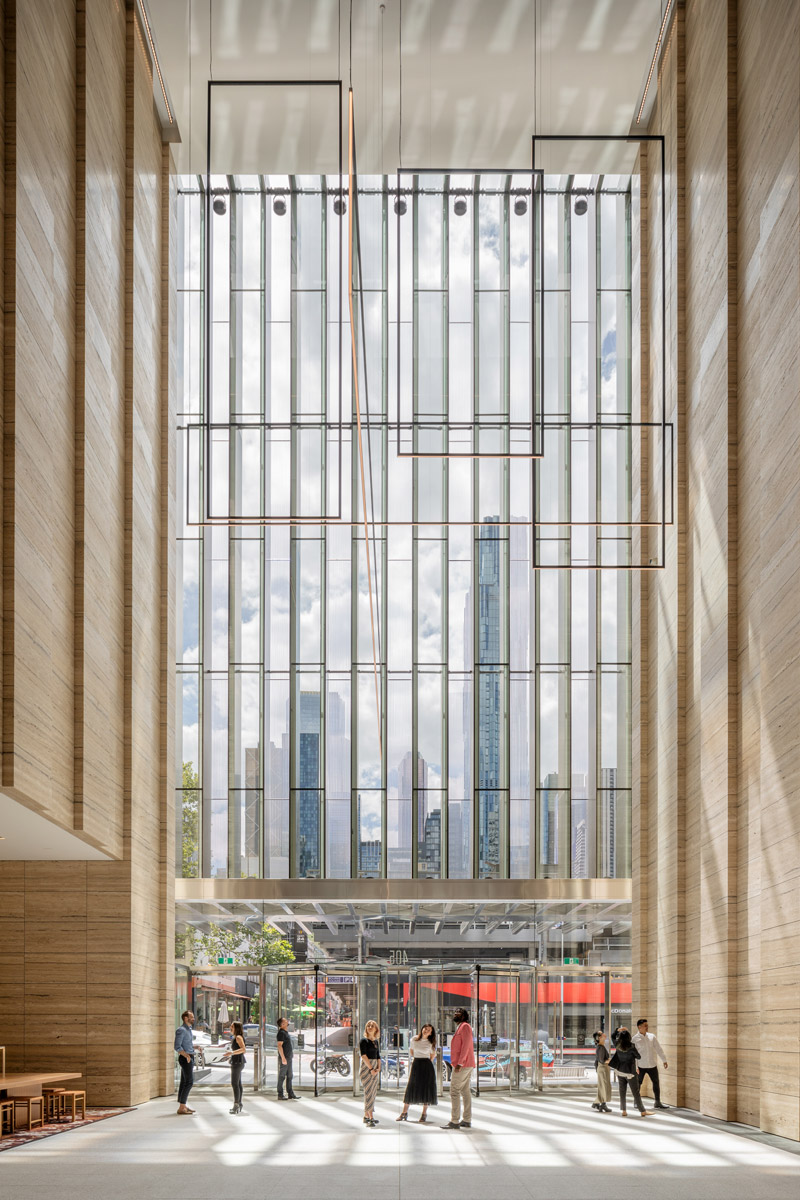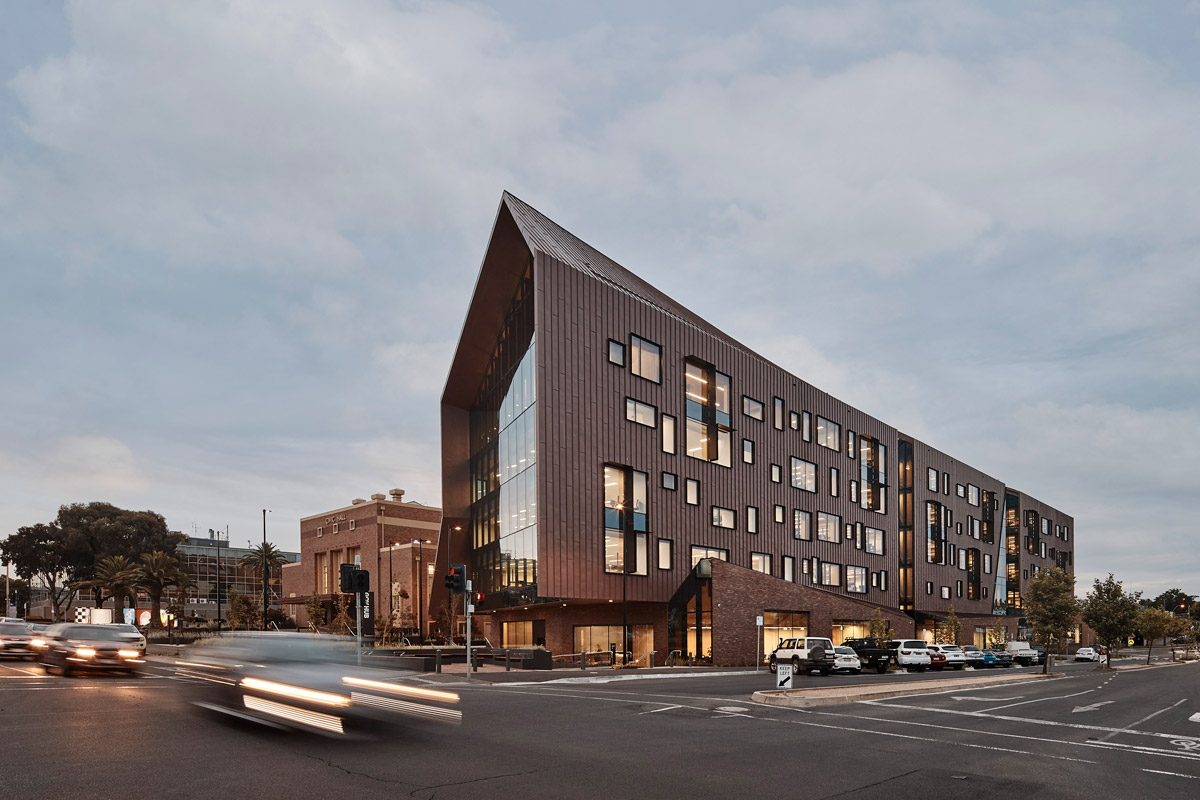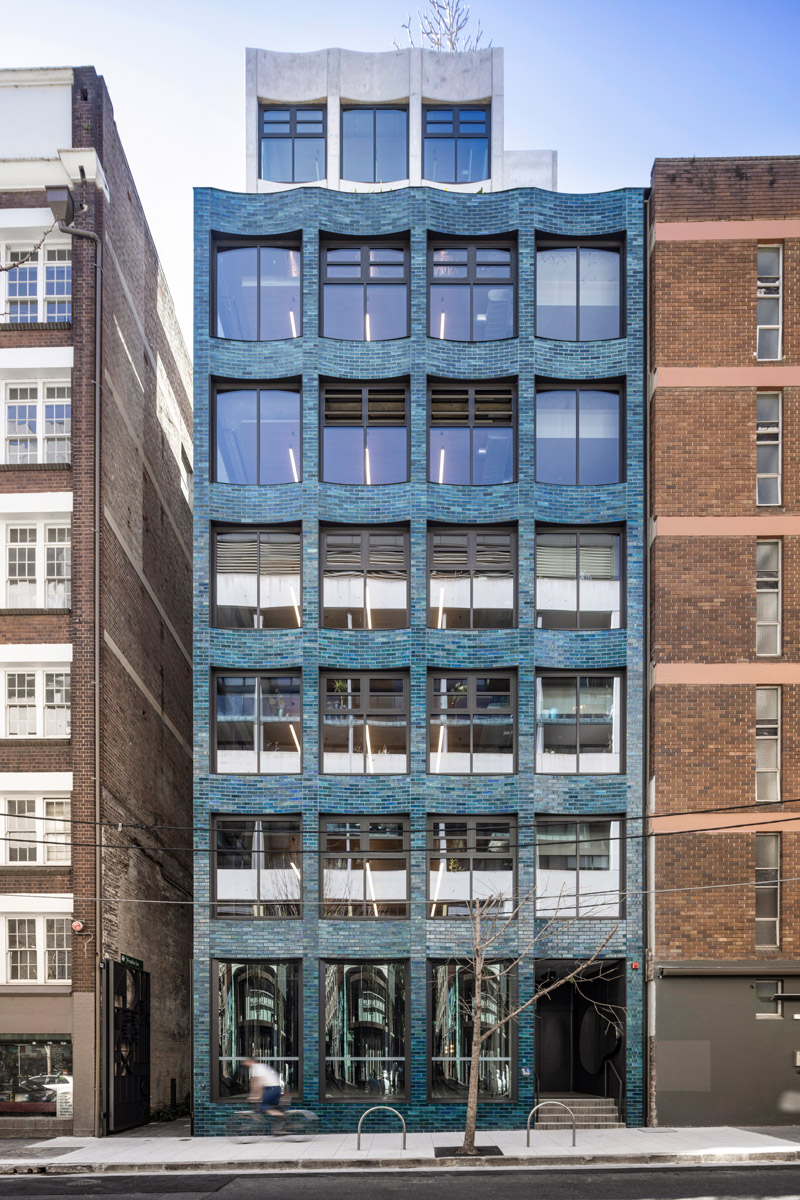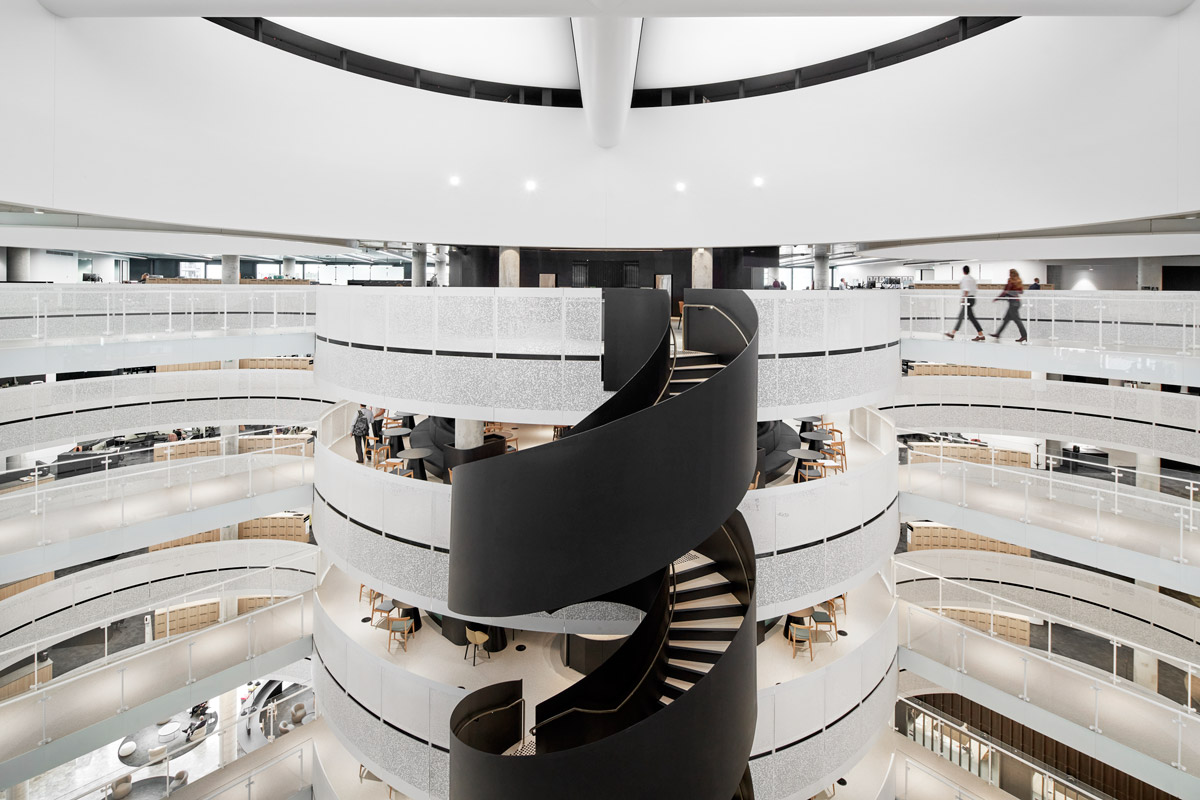Spacious floorplans, room to move and bundles of natural light have emerged as key factors among commercial developments voted among this year’s best State and territory chapters of the Australian Institute of Architects announced their winning entries last month as the AIA’s annual awards program hits the half-way mark. From civic centres to office buildings large and small the selection displays the latest in cutting edge design, material selection and style.
In Victoria, the highest honour went to Woods Bagot for the premium A-grade office tower development at 405 Bourke Street Melbourne. One of the city’s largest commercial buildings, the 39-level tower won the Victorian Institute of Architect’s Sir Osborn McCutcheon Award for Commercial Architecture. Judges cited the building’s uniquely oversized “new-generation” open-plan workspaces as well as abundance of natural light throughout as key factors in their decision.

405 Bourke Street rises almost 170 metres and its 30 office floors with 66,000sqm metres of Grade A space are wholly tenanted by NAB. Other design components setting it apart are the reflective façade, designed to catch the sun in different ways throughout the day, and the addition of new thoroughfare, Makers Lane, which links the development to the rest of Melbourne’s renown system of lively laneways.
Rising to the challenge
As the tower was built in and around the constraints of the existing site, much skill was required to maintain its structural integrity. One of the many technical challenges architects had to tackle involved construction of the primary tower with a composite slab and beam structure. The thin slab and long beam slabs meant the architects had to carry out almost forensic analysis of future footfall vibration to ensure the tower would meet building code requirements.
The AIA judges described the build of 405 Bourke Street as being executed with “a precise economy of structure, energy efficient services and deftness in material craft”.
Accessible and spacious
Coming in close behind 405 Bourke in the Victorian chapter of the Australian Institute of Architects awards was Ballarat GovHub, the John Wardle Architects-designed civic development in the regional town an hour from Melbourne. According to the judges, Ballarat GovHub’s design “creates a new model for the office”. High among features that impressed the judges were placement of the building’s two lift wells to allow for ease of distancing and generously proportioned stairways. These components “offer choice of route and ease of access ideally suited for a post-pandemic world”, according to the jury statement. About 1000 people work in Ballarat Gov Hub’s main five storey office building close by the central precinct with the town’s library, civic hall and park.

Environmentally friendly to the max, Ballarat GovHub is primarily built of mass timber (a combination of cross laminated timber (CLT) and glue laminated timber (GLT) which “radically reduces its carbon footprint”. The floorplan is designed to encourage productivity and teamwork via “neighbourhoods” delineated by timber columns and beams. Rather than the traditional glass-box appearance of office buildings, the architects instead wrapped the exterior in solid zinc. The roof was created to look more like that of a large rural shed and windows were placed in a more scattered pattern than usually found in an office building to achieve “a more domestic interior experience” that also made the development more heat efficient. Another inspired touch was replacing what would usually be a wall at one end of Ballarat GovHub with glass so the structure would “make visible the work of those serving the community”.
Reworking the past
In NSW the top commercial architecture prize went to the designers of 52 Reservoir Street, in Sydney’s inner-city Surry Hills. The eight-storey mixed-use building designed by SJB Architects features boutique office space above a restaurant and bar at street level. The architects ticked so many boxes with their rejig of an existing structure the judges deigned the project as setting “a new paradigm for urban infill”.
 A critical feature that caught judges’ attention was the insertion of a narrow laneway on the site. This serves to not only reconnect two streets but also attract more foot traffic and passers-by day and night while allowing for more windows and therefore light to flow into the building on the floors above. The site’s heritage was taken into account and historic imagery and new artworks pay homage to its original era.
A critical feature that caught judges’ attention was the insertion of a narrow laneway on the site. This serves to not only reconnect two streets but also attract more foot traffic and passers-by day and night while allowing for more windows and therefore light to flow into the building on the floors above. The site’s heritage was taken into account and historic imagery and new artworks pay homage to its original era.
Inside, workers enjoy natural ventilation, a column-free floorplate and daylight from three sides. There is also a garden rooftop terrace with city views.
Enticing features
In the ACT, Bates Smart won the top commercial gong for the concepts its team created for the landmark Constitution Place development in the heart of Canberra City. Described as a future-proof workplace, the 12-level precinct offers one of the city’s most modern commercial office buildings and more. Light-filled floor plans and expansive views over Lake Burley Griffin join end-of-trip facilities, a gym and plenty of parking on a list of enticements that has resulted in leading financial institutions and government departments becoming tenants. The precinct also features some of the city’s best shopping and dining outlets plus a leading hotel.

Judges described Constitution Place’s taller, more conservative commercial building as “the architectural equivalent of a superbly tailored suit”. Adjacent is a lower height, lighter-coloured building facing the heritage Old Parliament House. In comparison to its taller neighbour, it has been designed to be in keeping with its civic function and blend with the ‘eat street’ component of Constitution Avenue with its restaurants, entertainment and service outlets in proximity to Canberra Theatre.
The 2022 National Architecture Awards takes place on November 3. See Architecture Awards Program – Australian Institute of Architects for more details